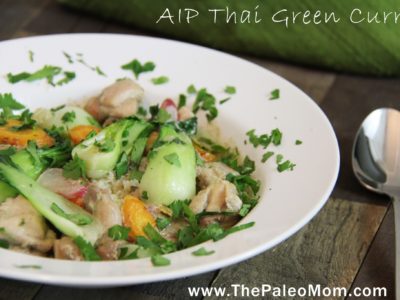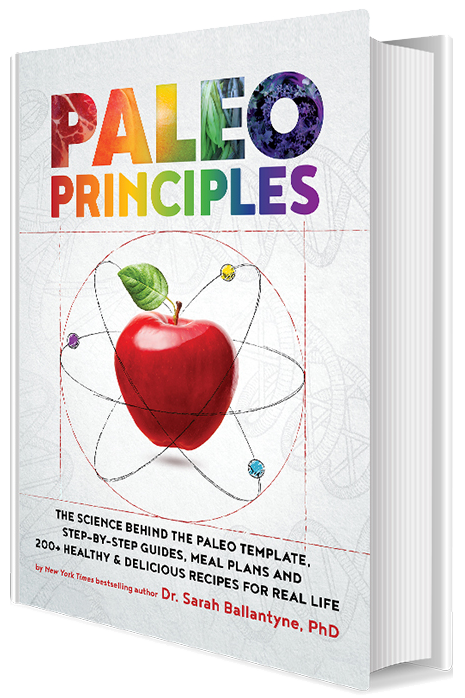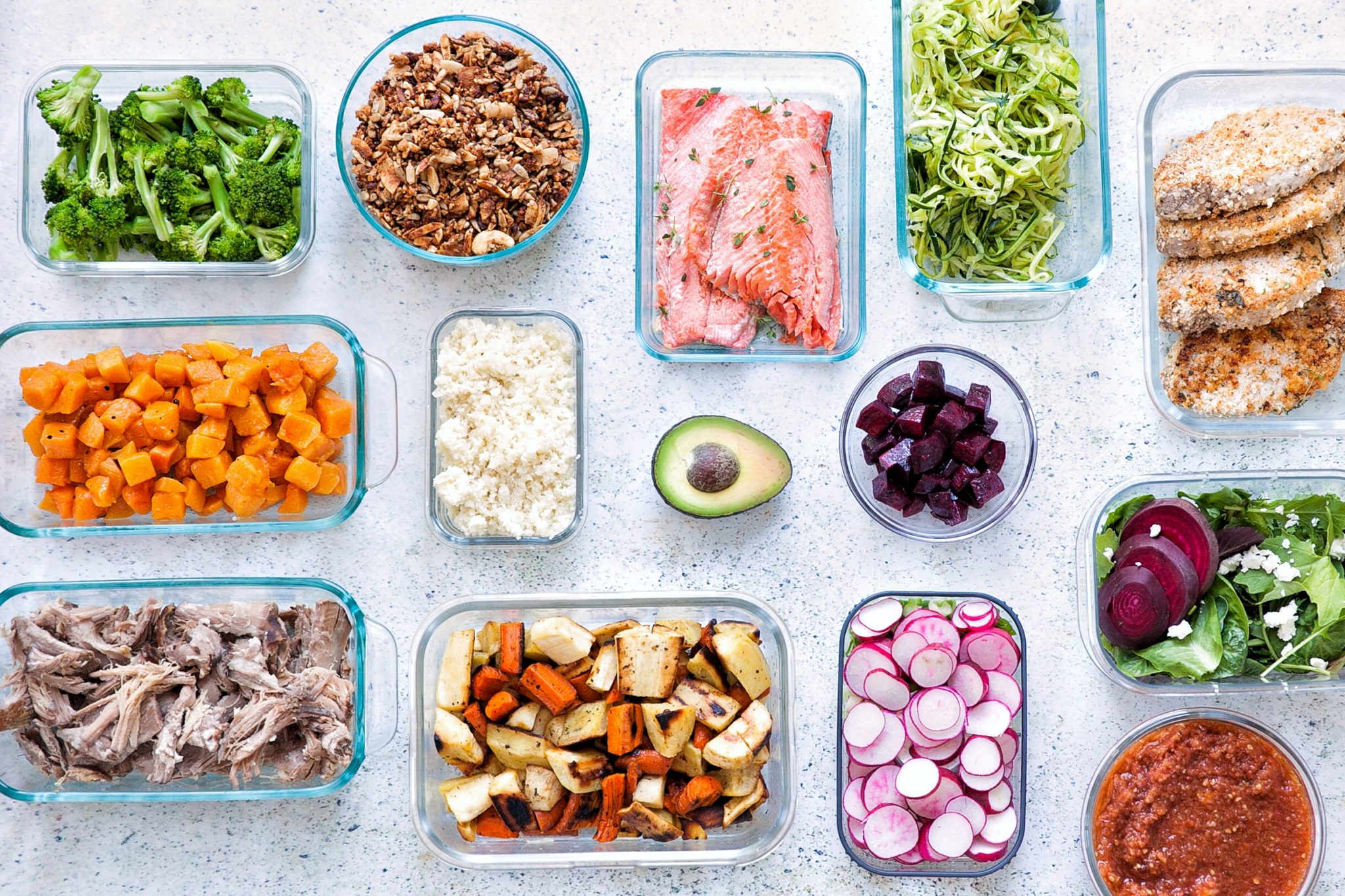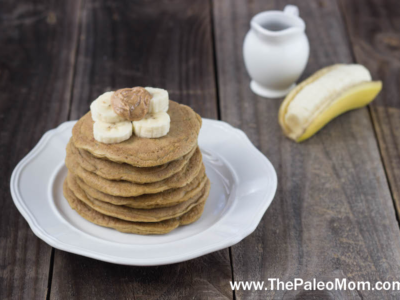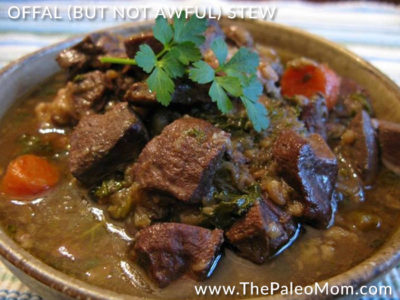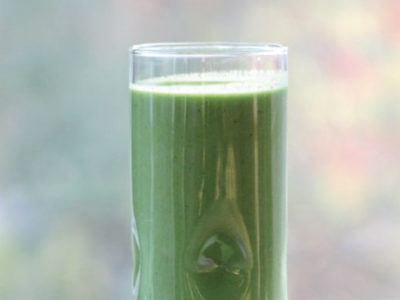Hmmmm, curry…. it’s a flavor that I never thought I’d be able to recreate with the more limited collection herbs and seasonings available on the autoimmune protocol. That is, until I visited Russ Crandall (aka The Domestic Man) for a long weekend and learned a ton of valuable curry tricks directly from the master!
Russ cooked some amazing meals for me and my family out of his new book, Paleo Takeout (which I adore and very highly recommend, read my full review here and note that Russ has compiled an exhaustive list of AIP modifications for his recipes here, including for his original version of this recipe). His flavors were so exquisite that it made me want to give up recipe developing for good! Seriously, my husband and I spent pretty much the entire long weekend at Chez Crandall in food comas. When I returned home though, instead of feeling defeatist, I felt inspired (let’s all breathe a sigh of relief for this swticharoo in attitude). My visit to the Crandall’s home has refueled my creativity in the kitchen (woot!). And what better way to honor Russ and his amazing new book than by creating my own, fully AIP version of my favorite meal that he served us: Thai Green Curry.
Russ modified his version from Paleo Takeout to accommodate my food intolerances (I have successfully reintroduced some of the foods on included on the AIP), and I learned some important nuggets of information while he did so: cilantro stems can replace pepper in a curry recipe; galangal is not the same as ginger; and shrimp paste is the bomb. I didn’t want to simply modify Russ’ recipe to create my own though (if I could even call that my own, sheesh). Instead, I took these nuggets of information, started from a recipe in an authentic Thai Cookbook that I bought 20 years ago, channeled my refound enthusiasm for cooking, and used a little ingenuity of my own–and voila! Here is my recipe for AIP Thai Green Curry!
There are definitely some specialty ingredients included in this recipe, like galangal and shrimp paste , along with other more commonly-seen specialty ingredients like fish sauce. They are actually the secret to making this a very authentic and flavorful dish. All can be easily purchased online relatively inexpensively and with extremely long shelf lives.
Yield: Enough green curry paste for making this recipe twice, recipe serves 4-6
Prep time: 20-30 minutes
Cook time: 25 minutes
Ingredients (Green Curry Paste):
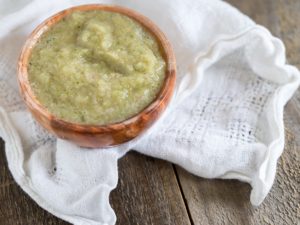
- 3 shallots (about 2/3 cups chopped)
- 9 cloves garlic, crushed
- 1 tsp dried galangal rehydrated in 1/4 cup hot water (see note)
- 1 stalk lemon grass (white part only), chopped
- 1 tsp lime zest (dark green part only)
- 2 Tbsp lime juice (about 1 lime–even better if you can get a kaffir lime)
- 1 tsp salt
- 1 tsp shrimp paste
- 1 Tbsp fish sauce
- 1/3 cup chopped cilantro stems
- 1/4 tsp wasabe powder (optional)
- Combine all ingredients into a blender and blend until a completely smooth paste forms (about 1-2 minutes). If it’s not blending well, add a little bit of water to get it going.
- Store leftover curry paste in the fridge for up to a week, or in the freezer for long term storage.
Note on galangal: Galangal is an absolutely magical seasoning, fundamental to many traditional Asian dishes. It’s available online here. To rehydrate, simply mix with hot water and let sit while you prepare the rest of the curry paste ingredients. If you are super lucky and can get fresh galangal, replace with 1 Tbsp fresh grated and a couple tablespoons of cold water to get the curry paste blending. If you find sliced galangal, use about half a slice or chop or grate before rehydrating. If you can only find ground galangal, use 1 tsp and skip rehyrating. And finally, if you can’t find galangal at all, a decent substitution is 1 Tbsp grated fresh ginger, 1/4 tsp ground cinnamon and again, a couple tablespoons of cold water to get the curry paste blending.
Low FODMAP Modification: I don’t usually include low FODMAP modifications in my recipes, but it just so happens that while I was creating this recipe, I did one variation using garlic scapes (1 1/4 cups choped) in place of both scallions and garlic and it worked really well!
Ingredients (Thai Green Curry):
- 2 Tbsp extra virgin coconut oil
- half of the green curry paste made from above
- 1 can full-fat coconut milk or coconut cream
- 2 lbs boneless, skinless chicken thigh meat, chopped into 1-inch pieces
- 2 large carrots, sliced
- 1/2 bunch radishes, sliced
- 1 lb bok choy, individual leaves separated and roughly chopped if very large
- 1/2 cup chopped fresh cilantro leaves, to taste
- Heat coconut oil over medium-high heat in a 10″-12″ saute pan.
- Add curry paste as cook for 2-3 minutes, stirring constantly, until curry paste has deepened in color slightly and become very fragrant.
- Add 1/3 of the can of coconut milk. Continue to cook curry paste for another 3-4 minutes, stirring constantly.
- Add chicken and another 1/3 of the can coconut milk. Cook uncovered, stirring occasionally, until chicken is fully cooked, about 10-12 minutes.
- Add carrots and radish. Cook uncovered, stirring occasionally, for 5 minutes. Add bok choy and cook 4-5 more minutes, until all vegetables are cooked al dente.
- Add the remaining coconut milk, stir in just to heat.
- To serve, pour over cauli-rice (or regular rice if you include that in your diet) or just enjoy plain. Sprinkle chopped cilantro generously over the top. Enjoy!
A note on variations: So, I really like the chicken, bok choy, carrot and radish combo here. But, you can make this dish with any meat and veggies you happen to have in the house. I’ve done this with sliced steak and shrimp and thoroughly enjoyed both! Thai basil leaves (also called holy basil) are a lovely addition right at the end. Below is a photo of a variation made with carrot, broccoli, zucchini and frozen fully-cooked shrimp! It cooked up extra quickly and was delicious! I didn’t even bother serving with cauli-rice, and had it more stew-style. Yum!
Not AIP? Want some heat? You could start playing with adding hot peppers to this recipe, but if you aren’t AIP and avoiding nightshades and seed-based spices, I highly recommend simply checking out Russ’ original recipe in Paleo Takeout.

